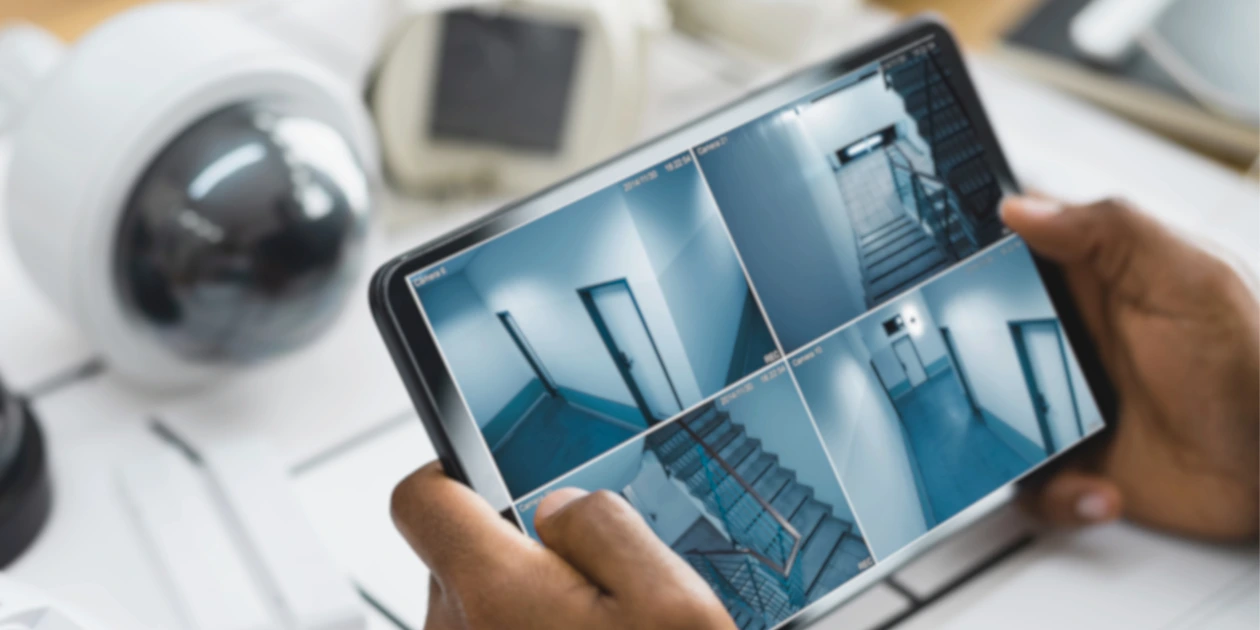Understanding Business Physical Security Measures
Physical security systems are critical for big enterprises, especially those with a hefty employee count and significant assets. But guess what's changing? The spotlight on security is now shining bright on smaller businesses too. It's a shift that's reflecting just how crucial physical security measures have become across the board.
Beyond the obvious benefits of preventing theft and vandalism, these systems play a pivotal role in creating an environment where your employees and customers can feel safe. In fact, when people walk into your establishment, they've got a certain level of safety expectation – it's becoming the new normal. Whether you're a major player or a smaller participant in the business arena, security is stepping up to become a key factor in everyone's game.
If you're just getting started on your journey of implementing a security strategy, you're in the right place! In this article, we're going to break down the whole concept, covering what it entails and exploring the different parts it's made up of. Plus, we'll share some valuable insights to help you navigate the process of selecting the perfect system for your specific business needs. Let's dive in!
What is physical security?
Great question! Physical security refers to the measures and strategies put in place to protect the physical assets, people, and resources of an organization or facility. These assets can include buildings, equipment, inventory, sensitive information, employees, and customers. The goal of physical security is to prevent unauthorized access, mitigate risks, and ensure the safety and security of the physical environment.
What makes up a strong physical security plan?
Here's a breakdown of the various components of a system, along with the strategies to factor in when putting your physical security plan into action. The scope of what you'll require can vary, depending on factors like your business's size, requirements, and industry regulations. You might discover that you need to incorporate only a select few of these elements or go for the whole package – it really depends on what fits your unique situation best.
- Access Control: Implementing measures to control who can enter specific areas of a facility. This can involve physical barriers like doors, gates, turnstiles, as well as electronic systems like keycards, biometric scanners, and PINs.
- Surveillance and Monitoring: Utilizing security cameras, sensors, and alarms to monitor the premises and detect unusual or suspicious activities. Surveillance footage can be used for real-time monitoring and as evidence in case of incidents.
- Intrusion Detection Systems: Installing sensors and detectors to identify unauthorized entry or attempted breaches. These systems can include motion sensors, glass break detectors, and door/window sensors.
- Security Personnel: Employing security guards, personnel, or patrols to physically monitor and safeguard the premises. These individuals can respond to incidents, perform regular checks, and provide a visible deterrent.
- Security Lighting: Properly lit areas discourage criminal activity by reducing hiding spots and improving visibility. Motion-activated lighting can be particularly effective in deterring unauthorized access.
- Fencing and Barriers: Physical barriers like fences, gates, and bollards can prevent unauthorized entry and protect a facility from vehicle-related threats.
- Alarm Systems: Audible alarms, silent alarms, and panic buttons can alert security personnel or law enforcement in case of emergencies.
- Visitor Management: Implementing procedures to vet and track visitors, contractors, and vendors. This can include sign-in processes, identification checks, and temporary access passes.
- Emergency Preparedness: Having well-defined plans and procedures for responding to emergencies such as fires, natural disasters, and security breaches. This can include evacuation plans, communication protocols, and designated assembly points.
- Physical Layout and Design: Designing the physical layout of the facility to minimize vulnerabilities, control access points, and optimize security measures.
Choosing the right physical security system:
- Assess Your Needs: Start by evaluating your business's specific security needs. Consider factors like the size of your premises, the type of assets you have, and the level of security required.
- Budget: Determine your budget for a security system. While investing in security is crucial, you need to have a balance between cost and effectiveness. There are a variety of cost-effective solutions like managed physical security, perfect for small businesses.
- Scalability: Choose a system that can grow with your business. As you grow, your security needs may change, so opt for a system that can be easily upgraded.
- Integration: If you already have other security systems (such as fire alarms) consider solutions that can integrate seamlessly with your existing infrastructure.
- Professional Consultation: Consulting with security professionals or system integrators can help you identify the best solution for your business's unique requirements.
- User-Friendly Interface: Choose a system that features an intuitive interface customized to match not only your skill level but also that of your employees. If you're considering having a dedicated security director on your team, you might have a bit more leeway to explore advanced systems. However, if dedicated resources aren't part of the picture, aim for something that's straightforward and easy to use.
- Remote Monitoring: Look for systems that offer remote monitoring options, so you can keep an eye on your business even when you're away.
We hope this could provide you with some valuable insights to kickstart your journey toward better security measures. Undoubtedly, the significance of a physical security system for small businesses can't be emphasized enough. Reading through this article is a great first step to not only protecting your assets, but also to strengthen overall safety, inspire trust, and foster peace of mind.
As you move forward, remember you're not in this alone. At Prime Secured, we're here to be your trusted guides, helping you navigate the landscape of security technologies. We're here to assist in selecting the appropriate system, handle the installation and offer ongoing support for your system – consider us your partner, we’ve got your back.
Feel free to get in touch with us for further discussion or guidance. Stay secure and confident on your business journey!
Our Blog
Subscribe to the Prime Secured blog to receive the latest updates.

